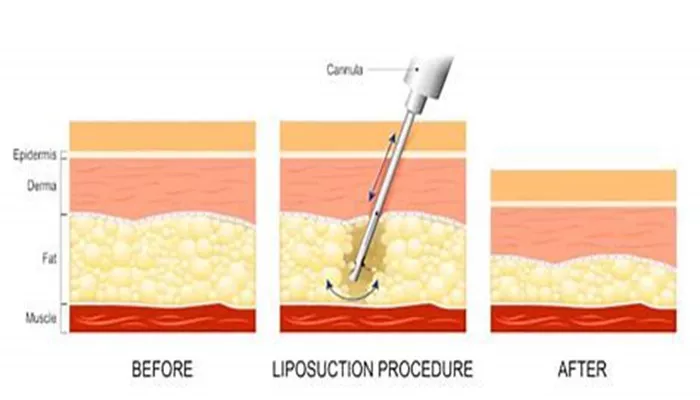Liposuction is a popular cosmetic procedure that helps to remove excess fat from specific areas of the body, such as the abdomen, thighs, and hips. While liposuction is generally considered safe and effective, it is important to choose the right type of liposuction for your individual needs and goals. In this article, we will explore the safest types of liposuction and what you need to know to make an informed decision.
The Nature of Liposuction
Liposuction is a surgical procedure that involves making small incisions in the skin and using a suction device to remove excess fat from the body. While liposuction can provide immediate results and improve body shape, it is important to have realistic expectations about the results.
The Safest Types of Liposuction
There are several types of liposuction available, each with its own benefits and risks. The safest types of liposuction include:
Tumescent Liposuction
Tumescent liposuction is the most common type of liposuction and is considered one of the safest options available. This technique involves injecting a solution of local anesthetic and epinephrine into the treatment area, which helps to numb the area and reduce bleeding. A small cannula is then used to remove the excess fat from the body. Tumescent liposuction is generally considered safe and effective, with a low risk of complications.
Laser-Assisted Liposuction
Laser-assisted liposuction, also known as SmartLipo, uses a laser to liquefy the fat before it is removed from the body. This technique is generally considered safe and effective, with less trauma to the surrounding tissues and a faster recovery time than traditional liposuction. However, there is a slightly higher risk of complications with laser-assisted liposuction, such as burns and skin irregularities.
Ultrasound-Assisted Liposuction
Ultrasound-assisted liposuction, also known as VASER liposuction, uses ultrasound technology to break up the fat before it is removed from the body. This technique is generally considered safe and effective, with less trauma to the surrounding tissues and a faster recovery time than traditional liposuction. However, there is a slightly higher risk of complications with ultrasound-assisted liposuction, such as burns and skin irregularities.
Power-Assisted Liposuction
Power-assisted liposuction, also known as PAL, uses a vibrating cannula to break up the fat before it is removed from the body. This technique is generally considered safe and effective, with less trauma to the surrounding tissues and a faster recovery time than traditional liposuction. However, there is a slightly higher risk of complications with power-assisted liposuction, such as skin irregularities and contour deformities.
Choosing the Right Type of Liposuction
When considering liposuction, it is important to choose the right type of liposuction for your individual needs and goals. Factors to consider when choosing the right type of liposuction include:
The Amount of Fat to be Removed
The amount of fat to be removed can impact the choice of liposuction technique. In general, larger amounts of fat may require more invasive techniques, while smaller amounts of fat may be suitable for less invasive techniques.
The Treatment Area
The treatment area can also impact the choice of liposuction technique. Some techniques may be better suited for certain areas of the body, such as the abdomen or thighs.
Your Health and Medical History
Your overall health and medical history can also impact the choice of liposuction technique. Certain techniques may be more suitable for individuals with certain medical conditions or risk factors.
Risks and Benefits of Liposuction
Like any surgical procedure, liposuction carries some risks. The risks associated with liposuction include bleeding, infection, scarring, skin irregularities, and contour deformities. However, these risks can be minimized by choosing a qualified and experienced surgeon, following post-operative instructions carefully, and maintaining a healthy lifestyle.
The benefits of liposuction include improved body contour, enhanced self-esteem, and improved overall health. Liposuction can also help to reduce the risk of certain health conditions, such as heart disease and diabetes, by reducing excess fat in the body.
Advancements in Liposuction Technology
In recent years, there have been several advancements in liposuction technology that have made the procedure even safer and more effective. For example, some surgeons now use 3D imaging technology to create a detailed map of the treatment area, which can help to improve the accuracy and precision of the procedure. Other advancements include the use of smaller cannulas, which can reduce trauma to the surrounding tissues and improve recovery time.
Conclusion
In conclusion, liposuction is a safe and effective way to remove excess fat from the body. The safest types of liposuction include tumescent liposuction, laser-assisted liposuction, ultrasound-assisted liposuction, and power-assisted liposuction. When considering liposuction, it is important to choose the right type of liposuction for your individual needs and goals. Factors to consider when choosing the right type of liposuction include the amount of fat to be removed, the treatment area, and your overall health and medical history. It is important to consult with a qualified medical professional to determine the best course of action for your individual needs and goals. With the right approach, you can achieve a more toned and sculpted appearance after liposuction.
Related Topics:


